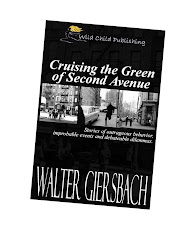The Wild, Wild West of Book Dealing
Publishing and book retailing are going through a technological, cultural, and marketing shift of tsunami proportions. When the tidal waves subside, there will be a lot of dead fish on the beaches of big business.
Publishing Trends reports, “On-demand publishing has overtaken traditional publishing in yearly title output, signaling a surge in products like customized print-on-demand books, according to a recent Publishing Business webinar, ‘Customized Books: What Is The Opportunity?’”
The number of POD (print on demand) titles published in the U.S. increased more than 200% in 2008, up from 285,394 in 2007. In the same period, publication of traditional titles dropped 3% to 275,232. In other terms, according to industry resources Bowker and Interquest, the POD market increased from 20 billion pages in 2006 to 38 billion in 2009.
The “vanity press” has been around as long as there have been printers waiting to take an author’s money. The distinguishing factor in the rise of POD is the technological ease with which a writer can get a work into print and have it broadly distributed.
Publishers Are Their Own Worst Enemy
What makes POD attractive? Cover prices that are reduced. Royalties that accrue to the author in greater amounts. Wider distribution through “long-tail” marketing. (A single outlet, like Amazon, carries hundreds of thousands of books, while a mass retailer is limited by store size.) And publishers have virtually eliminated marketing and promotion for all except major (i.e., money-making) authors.
At the same time, publishers continue to hold sacred the Depression-era practice of accepting the return of any book that the retailer cannot sell. This strange marketing practice began as a way to ensure that retailers would continue to stock new titles. In 2005, however, the Association of American Publishers reports that of the 1.5 billion books shipped, 455 million were returned to publishers — 31 percent! — at the publishers’ expense.
Would General Electric ever consider shipping refrigerators to Wal-Mart under these consignment conditions? Or Ford Motors to its independent dealers?
Publishers are scrambling to meet the new paradigm by discounting, spiffing (Sales Performance Incentive Fund) the big box outlets, and flirting with new techniques. Textbook publishers are raising prices to outrageous heights while introducing CD workbooks on three-year revision cycles to reduce the effect of students reselling their old texts. Price cards, like Borders or Barnes & Noble “memberships,” are resulting in a barrage of e-mail solicitations and discounting. And prices continue to rise, with e-books often marketed at over 80 % of the hardcover price.
Pricing is the new battlefield. In October 2010, I searched Barnes & Noble for Special Projects in Calamity Physics by Marisha Plessl. This 2006 novel had been an immediate bestseller. Now, Amazon was discounting the trade paperback down from $15.00 to $10.50, while offering a Kindle download for $12.99. Barnes & Noble listed the trade paper at $10.80 and the e-book at $12.99.
Pause and think about it. It doesn’t take a wizard to know something’s wrong when the cost of a digital product approaches or exceeds the cost of a formatted, typeset, printed, bound and shipped version that is subject to returns.
Next: Who Are Those POD and E-book Publishers?
Wednesday, May 25, 2011
Subscribe to:
Post Comments (Atom)



No comments:
Post a Comment